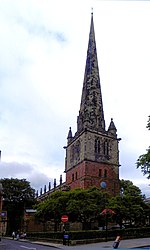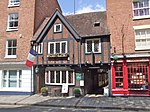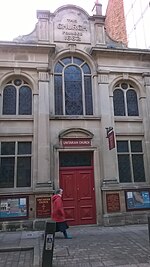Newport House, Shrewsbury
Buildings and structures in ShrewsburyCity and town halls in ShropshireGovernment buildings completed in 1696Grade II* listed buildings in ShropshireUse British English from April 2022

Newport House, formerly the Guildhall, is a former municipal building in Dogpole, Shrewsbury, England. It is a Grade II* listed building. The boundary wall is separately listed.
Excerpt from the Wikipedia article Newport House, Shrewsbury (License: CC BY-SA 3.0, Authors, Images).Newport House, Shrewsbury
Dogpole,
Geographical coordinates (GPS) Address Nearby Places Show on map
Geographical coordinates (GPS)
| Latitude | Longitude |
|---|---|
| N 52.7076 ° | E -2.751 ° |
Address
Dogpole
SY1 1EN , Coleham
England, United Kingdom
Open on Google Maps











